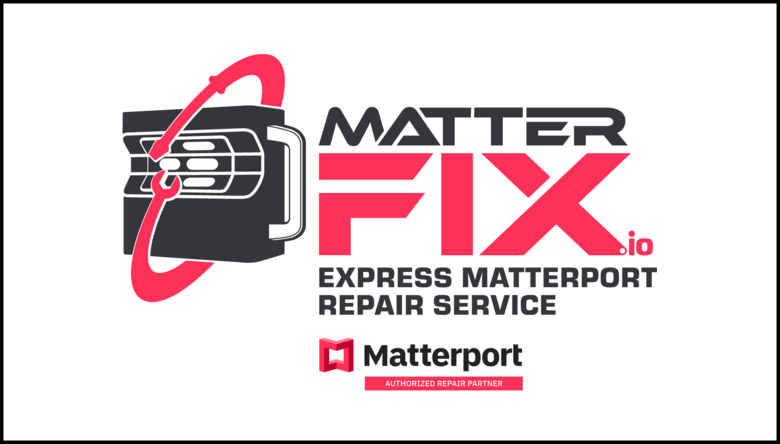Video: Buying a Used Matterport Camera? What to Look For!17194
Pages:
1
 WGAN Forum WGAN ForumFounder & WGAN-TV Podcast Host Atlanta, Georgia |
DanSmigrod private msg quote post Address this user | |
 MatterFix Video: Buying a Used Matterport Camera? What to Look For! | Video courtesy of MatterFix YouTube Channel | 26 July 2022 Special Offer for WGAN Forum Members   Free! 12 months of WGAN-TV Training U (in Matterport) Membership with a MatterFix repair of $250 or more. Transcript (video above) [00:00:11] Mike Vorce: -Hello, this is Mike with MatterFix.io, and this is one in our series of pro tips videos that we're doing for that Matterport Service Provider Community. In these videos, we try and go through a common questions that we get and help you diagnose problems with a camera and maybe what your repair options are, things like that. This particular video is we're calling what to look for when buying a used Matterport camera. We do get a question fairly off and, hey, I'm thinking about buying a camera, but it's doing this or should I buy a used camera? I want to put in a plug for the cameras that we sell. At MatterFix we sell what we call a certified pre-owned cameras. These are cameras that we bought and we've either bought them in very good, brand new condition or if they need anything done to them, we completely replace all the needed parts and bring them up to a like new standard. We sell those cameras at a pretty reasonable price and we warranty them for one year. That's a consideration you're thinking about buying a camera. A lot of times ours are about the same as what the market price is. But anyway, so if you're thinking about purchasing a used Matterport camera, what do you want to look for? Okay, so the first thing you want to do is just do a quick visual inspection. Make sure the seams are fitting good. Make sure that the lenses, there's no cracks or scratches or anything on the lenses, and just in general, what does it look like? If the screw covers are missing, for example, that's a bad sign. That means somebody may have gone into that camera themselves. That's always kind of a warning sign because people can damage cameras if they don't know what they're doing. The next thing you might want to look at is the mount itself, okay? If they're telling you this is a brand new camera or I only used it three times or whatever, then this base plate on the bottom should look like this. It should look like brand-new. There shouldn't be any wear on the paint or anything. If they're telling you they haven't used the camera hardly at all and that plate looks like this with the paint worn off, then you know, right away they're not being straight with you. You can tell a little bit about how much wear there is on the camera by looking at the base plate, the next thing you want to do is rotate the mount. There's a shaft that goes through here and this is the drive mechanism goes into the clutch assembly, and when you rotate it by hand, there should be a fairly firm, constant resistance. You spin it like that. If you spin it fast like that, you shouldn't hear any clicking, it shouldn't change, should be the same. Also, there shouldn't be any play in it. When it's resting like this, if you can take your fingers and you can jiggle it if there's any slack or anything in there, that's a sign that the probably the clutch gear is worn out or something's out of adjustment in there. That covers the basic things you look at it on the outside. The next thing you want to do is plug the camera in and make sure that the camera is taking a charge. Anytime you plug a good charger into a Matterport camera that's functional, that's not having any problems, immediately the OLED panels should come on. The status light should tell you how much charge there is in the battery. This one is telling you how long it's going to take until it's full. If it's charging normally, you'll get a slow, every two seconds, single blinking light. If it's not charging, let me show you here. Here's a pro one that I know has bad batteries in it. Now these batteries need to be replaced. They're totally dead, but still you plug it in. The OLED panel lights up, it tells you a 0%. It goes to the lightning bolt for a second to try and charge. But it says, hey, these batteries aren't taking a charge, but that's lit up. Now this is the other blinking light. This is the fast the double pulse. Every second you get a blink, blink. This means that the charger is good, the camera is recognizing the charger, but for some reason it's not charging the batteries, and that's basically two reasons that's going to happen. One is the batteries are dead to the point where they need to be replaced and the other is the battery is completely full and at that point it stops charging and it goes to that double blinking light. That covers the basics on that. The other thing you want to look for, if you do plug it in and it says 0% and it's double blinking, not taking a charge and you think, well, you'd think the batteries are bad. You do want to leave it plugged in for three or four hours to see because sometimes the batteries will wake up and start taking a charge. But if you've left the camera plugged in for three or four hours, and it still shows 0% and you get the double blinking light, then that means those batteries are bad, they are going to have to be replaced. We do battery replacements at MatterFix. To replace one battery is $250. To replace both batteries is $400. I think I mentioned earlier we typically complete the repairs and send the cameras back the day after we get them. The other thing that you want to check on a Pro1 or a Pro2, both of those cameras have two batteries in them. To be sure that both of the batteries are good, you need to leave it plugged in and charged up to the point where it goes past 50%. Ideally, you want it to go to 60% because if one of these batteries is good and one is bad, it'll look like it's charging fine, but when it gets up to the 50% level, it'll cut off. That means one of the batteries are bad and is going to need to be replaced. You can still use the camera. You're just going to have half the life for it. That's how to kind of get an idea of what's going on with the batteries, and then the next thing you want to do is, so you looked at the outside, the mount, you tested the charging, that's kind of all the stuff you can see. But there can be problems inside the camera that you can't see. The most common problem is a result of the camera being dropped. [00:06:34] Mike Vorce: This is a Pro2 light. It's got the back housing on top plate, bottom plate and the front plate or off. Normally, when this camera is assembled, this is a sensor array, it would sit in here like this, and the sensor array is held in place by to support rods that go through the camera. They are aluminum rods here, so that's the construction of the camera. Now, if you can imagine if this camera is on a tripod, it is five or seven feet up in the air and it takes a tumble onto a hard surface, then there's some things that can happen internally to the camera. Some damage that can happen that you can't see just by looking at the camera. This main metal frame is called the chassis. It's possible that it can fall on a corner and it can bend that chassis. - That chassis gets bent. It's very likely you're going to get a unstable air when the camera is turned on. It's very likely that when a camera takes to drop one or both of these sensors support rods can get bad and that's going to distort the position of your sensor array, and the slightest distortion of that is going to affect your model. That goes over. Basically what can be going inside the camera you can't see. Another thing is a camera takes a spill, these USB cables that connect the sensor array to the main board and some other connections in there can possibly get loose and you're going to get an error code, but you'll see that when you turn the camera on. I go through what can be wrong inside now. How do you find out what's wrong inside? Well, what you can do is go ahead and take your camera, at this point, you want to go ahead and turn it on. First thing you want to look for as an error message. If you get an error message and it's a sensor error like O3 or O2, upper or lower mid. That's probably something that can pretty easily be repaired, but some sensor errors mean that the actual sensor array has been physically broken. In that case, the camera is going to have to go back to Matterport and get well, get a replacement though we manufacture it and re-calibrate it and basically turn it into a brand new camera. But if you get a sensor error that indicates that the sensor array is actually broken, that's bad. The other ones we can generally fix. You gone through there, you didn't get a sensor error, what you want to do is turn the camera on, put it on a tripod, open up your Capture app ideally on an iPad, and go ahead and initiate a scan and what you're looking for is the camera takes six sets of pictures as it rotates around and you want it to see it rotate nice and smoothly between each of those six positions. There should be no jumping know, stuttering when it stops, it shouldn't bounce. It should be a very smooth motion and come to a complete stop without any movement. If you get any jumping or anything like that, that again means that there's probably a problem in the drive mechanism and it's also going to affect your model. It can cause blurriness, stitching errors and things like that. After you've checked the rotation, then actually you want to do is move the camera to three or four positions and make sure you don't have any problems getting a connection, so you're getting the scans to align, moving 5 or 6 feet around. You shouldn't have any problems getting alignment in the Capture app, if you do there again, that means there's a problem with a camera. In that case, you probably that's a problem. You're probably not going to want to purchase that camera use because it definitely needs some work. The next thing you can do is you can test the Wi-Fi connection, so stand about 10 feet away from the camera, initiate a scan. As soon as the scan completes, the message is going to pop up on your iPad, it says, okay to move camera. When you see that message, it should take no more than four to seven seconds for the image to transfer from your camera to your iPad. If it's taking longer than that, that ad indicates there's a problem probably with the cable that goes from the WiFi antenna on to the main board, the camera may have been dropped in that cable has been pinched. If you get any disconnections, that's a sure sign that there's something wrong with the WiFi antenna. That covers the Wi-Fi. The next thing you want to do is take your Capture app and open up one of the scans and you want to look at the six vertical images that are inside the scan in the Capture app. Those are preview images. The color is going to be distorted. That's not what you're looking at is any distortions in the color. What you want to look for is the six vertical seems to make sure that they're in alignment. If you spin around and you see one and it's off, if it's off more than 3/8 of an inch or 1/2 an inch or 10 feet, then that's another indication that something is bent inside the camera and is going to need to be repaired. You want to go one step further, you can go ahead and upload a small model and go through the model and look at all of the horizontal lines, base boards, crown molding, window sills, door jams, anything that's a horizontal line, closely inspect those and see if you see any offsets because that's usually where it's going to show. If it's bad enough that it's showing in the finished model, then that's usually indicates a pretty bad problem that sensors or portraits or bad the chassis has been any number of issues there. If you've gone through all those things that we just discussed and it's performed pretty well, you're comfortable with the results in that. I'd say you're pretty safe to purchase that camera. If you have any of those issues, you can still always purchase the camera, but you need to be aware. You take it a little bit of a risk, you need to be aware of what the repair costs might be, but if it's discounted enough, it might be worthwhile for you purchasing the camera. Typically are $250 cost or repair costs level, we're going to fix issues like sensors, support rods, the WiFi antenna refit, the housing correctly, replace the fans. There's two fans inside there with the fans making too much noise will replace that, so a lot of the basic stuff we'll cover at $250. If the chassis is bad or if the clutch assembly is damaged, then the repair cost is going to be $350. But that 350 includes the replacement of the chassis and or the clutch assembly, both of those as they need to be. There's another carrier played it and there we replace it that, and with that, at that price, you're also getting whatever we would've gotten into $250 level. Most cameras that are repairable, the maximum cost to repair them is $350, so if you can by the camera, you know it enough of a discount, it's something you can consider. That pretty much covers it. As always, if you have any questions, messages on Facebook, you can call us. I think our phone number is on the website, email us info@MatterFix.io, and we look forward to helping you out with any of your Matterport camera problems. Thanks. --- WGAN-TV | Top 10 Matterport Pro1, Pro2 and Pro2 Lite Camera Repairs (Revisited) | Guest: MatterFix (@MatterFix) Founder Mike Vorce | Thursday, 18 November 2021 | Episode #126 |
||
| Post 1 • IP flag post | ||
Pages:
1This topic is archived. Start new topic?
















